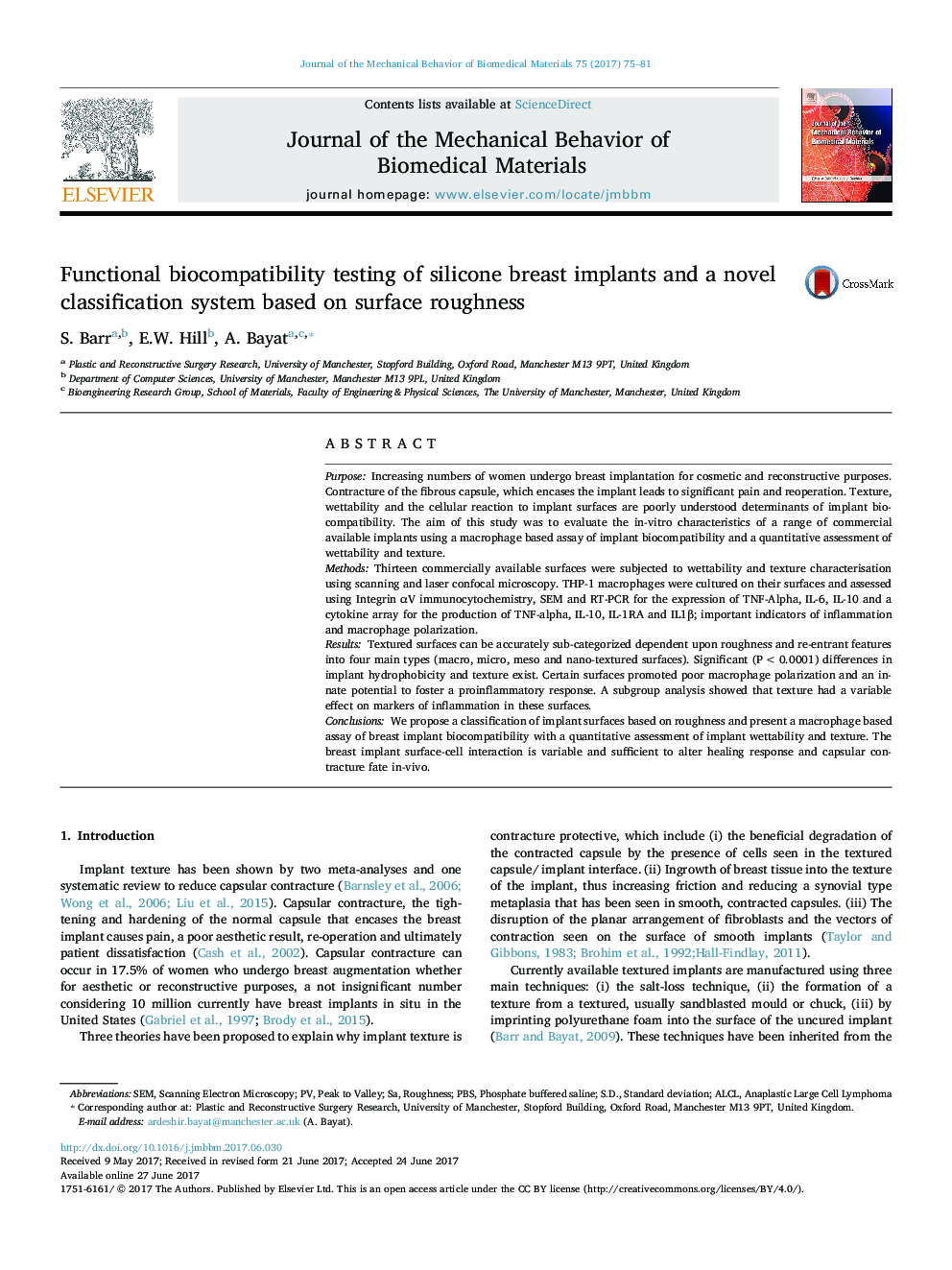| Article ID | Journal | Published Year | Pages | File Type |
|---|---|---|---|---|
| 5020454 | Journal of the Mechanical Behavior of Biomedical Materials | 2017 | 7 Pages |
PurposeIncreasing numbers of women undergo breast implantation for cosmetic and reconstructive purposes. Contracture of the fibrous capsule, which encases the implant leads to significant pain and reoperation. Texture, wettability and the cellular reaction to implant surfaces are poorly understood determinants of implant biocompatibility. The aim of this study was to evaluate the in-vitro characteristics of a range of commercial available implants using a macrophage based assay of implant biocompatibility and a quantitative assessment of wettability and texture.MethodsThirteen commercially available surfaces were subjected to wettability and texture characterisation using scanning and laser confocal microscopy. THP-1 macrophages were cultured on their surfaces and assessed using Integrin αV immunocytochemistry, SEM and RT-PCR for the expression of TNF-Alpha, IL-6, IL-10 and a cytokine array for the production of TNF-alpha, IL-10, IL-1RA and IL1β; important indicators of inflammation and macrophage polarization.ResultsTextured surfaces can be accurately sub-categorized dependent upon roughness and re-entrant features into four main types (macro, micro, meso and nano-textured surfaces). Significant (P < 0.0001) differences in implant hydrophobicity and texture exist. Certain surfaces promoted poor macrophage polarization and an innate potential to foster a proinflammatory response. A subgroup analysis showed that texture had a variable effect on markers of inflammation in these surfaces.ConclusionsWe propose a classification of implant surfaces based on roughness and present a macrophage based assay of breast implant biocompatibility with a quantitative assessment of implant wettability and texture. The breast implant surface-cell interaction is variable and sufficient to alter healing response and capsular contracture fate in-vivo.
Graphical abstractDownload high-res image (372KB)Download full-size image
